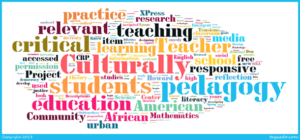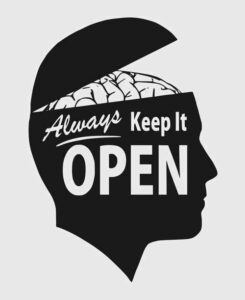Overview

According to Gloria Ladson-Billings, culturally relevant pedagogy is defined as, “a pedagogy that recognizes the importance of including students’ cultures in all aspects of learning.” Ultimately, culturally relevant pedagogy is a student-centered approach that incorporates students’ personal experiences, backgrounds, and identities to promote achievement and empower every individual. In my future classroom, I will incorporate all three components of culturally relevant pedagogy: academic success, cultural competence, and critical consciousness.

Academic success involves supporting learning by establishing high academic expectations for every student. There are a number of ways I will promote academic success in my future classroom. Firstly, I will promote resilience and a love of learning through growth mindset teaching and consistently reminding students that they are all capable of great success and achievement through hard work and perseverance. Additionally, I will always use people-first and strength-based language to validate my students’ and refer to them in terms of what they do well. I will also incorporate equitable educational strategies that allow all students to display what they know according to their strengths. For example, I will provide multiple means of engagement with content and opportunities for expression of new learning throughout my classroom lessons. One specific example could be allowing students who struggle with writing to draw pictures to further support their ideas. I could also provide instructional aids, like sentence frames, that allow all students to meaningfully engage with grade-level content.

Cultural competence involves implementing materials and instruction that are relevant to students’ lived experiences. To incorporate cultural competence in my future classroom, I will begin the year with a student interest survey to gain more information about my students’ identities and which topics they are interested in learning about. I will then use these interest surveys to guide my instruction throughout the year. Additionally, I will implement a morning meeting structure in the beginning of each school day. In addition to addressing numerous standards, morning meetings also provide valuable opportunities for building classroom community. These meetings will allow students to share important aspects of their identities as well as learn more about their classmates’ identities.

Critical consciousness encourages students to think critically about culture, norms, values, and institutions that produce and maintain inequities. To prepare my students to be critically conscious, I will expose my students to critical literacy and multiple perspectives. For example, I can provide opportunities for students to read and discuss books that challenge systems of inequity and expose students to alternative viewpoints they have not yet considered. Additionally, I can encourage students to think of ways to engage in community problem solving and consider ways to improve their school and larger communities. For example, lessons on the environment could also challenge students to think of tangible ways they can make positive impacts on the environments in which they live.